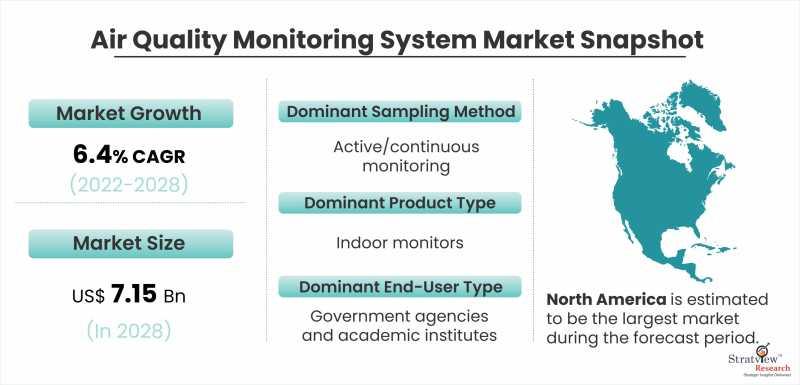Air quality has become a significant concern for public health worldwide. With the increasing awareness of the impact of pollution on human health and the environment, the demand for effective air quality monitoring systems is on the rise. These systems are not only crucial for identifying pollution sources but also for formulating and implementing policies to mitigate their effects. This article delves into the growth, technological advancements, and future prospects of the air quality monitoring system market.
The Importance of Air Quality Monitoring
Air quality monitoring is essential for several reasons:
Health Impacts: Poor air quality is linked to a range of health issues, including respiratory diseases, cardiovascular problems, and even premature death. Monitoring helps in understanding the extent of pollution and its direct impact on public health.
Environmental Protection: Accurate monitoring helps in assessing the environmental impact of industrial activities, vehicular emissions, and other sources of pollution.
Regulatory Compliance: Governments and regulatory bodies rely on monitoring data to enforce air quality standards and regulations.
Public Awareness: Monitoring data can be used to inform and educate the public about air quality issues and encourage actions to reduce pollution.
Market Growth and Trends
The global air quality monitoring system market is experiencing significant growth. According to market research, the market is expected to grow from USD 4.62 billion in 2021 to USD 7.15 billion by 2028 at a CAGR of 6.4% during the forecast period of 2022-2028.
Urbanization and Industrialization: Rapid urbanization and industrial activities have led to increased air pollution, necessitating robust monitoring systems.
Government Initiatives: Stringent regulations and government initiatives aimed at controlling air pollution are driving the demand for advanced monitoring systems.
Technological Advancements: Innovations in sensor technology, data analytics, and IoT integration have enhanced the capabilities and efficiency of air quality monitoring systems.
Public Awareness: Growing public awareness about the health risks associated with air pollution is boosting the demand for personal and community-level monitoring solutions.
Technological Advancements
Recent advancements in technology have revolutionized air quality monitoring systems:
Advanced Sensors: Modern sensors offer higher accuracy, lower detection limits, and the ability to detect multiple pollutants simultaneously.
Real-Time Monitoring: IoT-enabled devices provide real-time monitoring and data transmission, allowing for immediate analysis and action.
Data Analytics: Big data and machine learning algorithms are used to analyze large datasets, providing insights into pollution patterns and predicting future trends.
Portable Devices: The development of portable and wearable air quality monitors allows individuals to monitor air quality on-the-go.
Conclusion
Air quality monitoring systems are playing a crucial role in protecting public health and the environment. With technological advancements and increasing awareness of the impact of air pollution, the market for these systems is set to grow significantly. As we move towards a future where clean air is a priority, air quality monitoring systems will be at the forefront of this revolution, ensuring a healthier and more sustainable world.
To read in detail about market dynamics, Register here: https://www.stratviewresearch.com/Request-Sample/883/air-quality-monitoring-system-market.html#form

